REBIRTH A new generation quartz calibre, designed especially for Grand Seiko.
As the company’s technological expertise in quartz watchmaking progressed throughout the 1980’s, new heights of watch precision had been achieved, but the Grand Seiko team was still determined to push back the boundaries in areas other than simple precision. The first step was the enhancement of other aspects of a watch’s performance, such as resistance to temperature, humidity, and shock. Further development of high performance quartz oscillators was undertaken, including an ageing process to ensure their long term reliability and a new IC sensor was invented to detect temperature information and adjust for even the slightest variation in precision. All these advances were integrated into the new Grand Seiko quartz caliber, released in 1988. It delivered an annual precision rate of ±10 seconds and was designed to fit within a thin, elegant case. There were four models priced from 120,000 to 480,000 yen.
The development team, however, had already set their sights higher still. Their goal was to achieve the same levels of design and technical perfection as had been achieved with Grand Seiko’s mechanical collection. It was decided that only the development of an entirely new movement would achieve this and the team at Suwa Seikosha (today’s Seiko Epson) set to work.
As the company’s technological expertise in quartz watchmaking progressed throughout the 1980’s, new heights of watch precision had been achieved, but the Grand Seiko team was still determined to push back the boundaries in areas other than simple precision. The first step was the enhancement of other aspects of a watch’s performance, such as resistance to temperature, humidity, and shock. Further development of high performance quartz oscillators was undertaken, including an ageing process to ensure their long term reliability and a new IC sensor was invented to detect temperature information and adjust for even the slightest variation in precision. All these advances were integrated into the new Grand Seiko quartz caliber, released in 1988. It delivered an annual precision rate of ±10 seconds and was designed to fit within a thin, elegant case. There were four models priced from 120,000 to 480,000 yen.
The development team, however, had already set their sights higher still. Their goal was to achieve the same levels of design and technical perfection as had been achieved with Grand Seiko’s mechanical collection. It was decided that only the development of an entirely new movement would achieve this and the team at Suwa Seikosha (today’s Seiko Epson) set to work. They looked to make radical enhancements to every aspect of the movement, from precision to the precise alignment of the hands. After 3 years of development, the result was the 9F caliber, released in 1993. It delivered an annual accuracy of ±10 seconds. It had a backlash auto-adjust mechanism to exactly align the seconds hand to each dial marker and a special mechanism that ensured that the date change was instantaneous. In the watch’s external appearance, too, 9F opened new possibilities. A twin pulse control system made possible the long and heavy hands that were already a Grand Seiko signature, something that had not been possible before. Durability and reliability were also enhanced. A protective shield construction was introduced to prevent dust from entering the wheel train during battery replacement and, by covering the pivots of the rotor with Diafix, the company’s proprietary oil retention mechanism, a dramatic improvement in lubrication retention was achieved. It was a masterpiece of electronic engineering and was the most advanced quartz watch ever created. In harmony with the standards of Grand Seiko, the 9F movement was designed to be beautiful, with highly polished components some of which were finished in gold tone, despite the fact that there was no exhibition case back. A craftsman’s touch.
Read More
They looked to make radical enhancements to every aspect of the movement, from precision to the precise alignment of the hands. After 3 years of development, the result was the 9F caliber, released in 1993. It delivered an annual accuracy of ±10 seconds. It had a backlash auto-adjust mechanism to exactly align the seconds hand to each dial marker and a special mechanism that ensured that the date change was instantaneous. In the watch’s external appearance, too, 9F opened new possibilities. A twin pulse control system made possible the long and heavy hands that were already a Grand Seiko signature, something that had not been possible before. Durability and reliability were also enhanced. A protective shield construction was introduced to prevent dust from entering the wheel train during battery replacement and, by covering the pivots of the rotor with Diafix, the company’s proprietary oil retention mechanism, a dramatic improvement in lubrication retention was achieved. It was a masterpiece of electronic engineering and was the most advanced quartz watch ever created. In harmony with the standards of Grand Seiko, the 9F movement was designed to be beautiful, with highly polished components some of which were finished in gold tone, despite the fact that there was no exhibition case back. A craftsman’s touch.
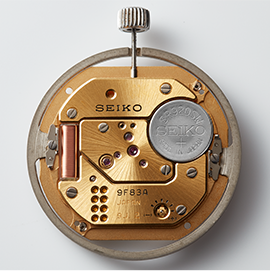
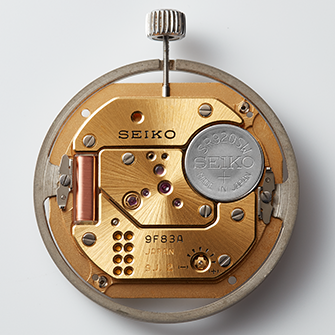
Calibre 9F83, 1993 Ultra high precision movement with an annual rate of ±10 seconds. The wheel train was covered with a metal bridge to protect the movement from shock and dust. Although hidden by the case back, it housed elegant gold-colored parts.
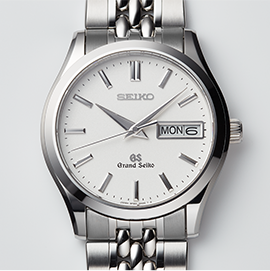
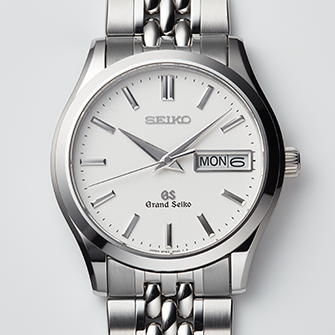
Grand Seiko, 1993 Diamond-cut hour hands were used to achieve a legibility and impact that honored the Grand Seiko name. The calendar was also enlarged for a good balance between high precision and high legibility.
Perfection in every detail
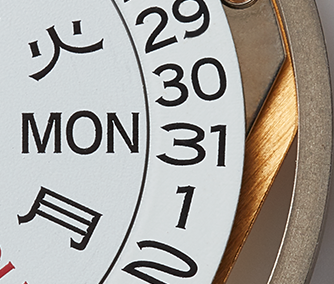
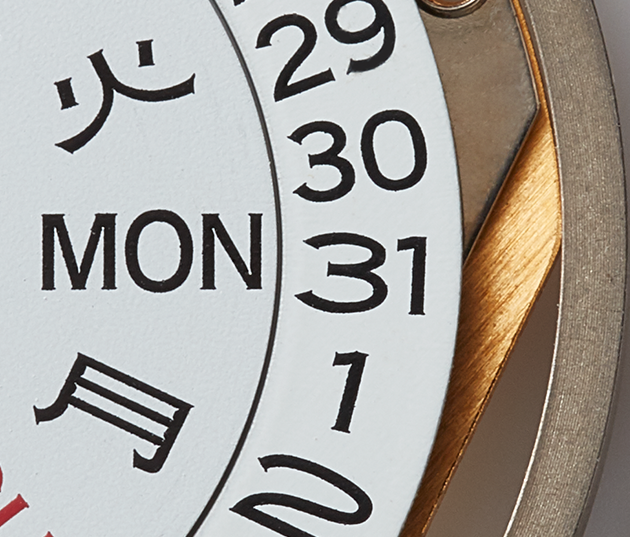
The 9F movement had a larger, more legible calendar.
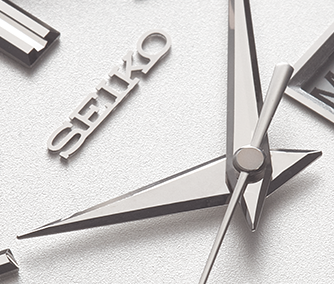
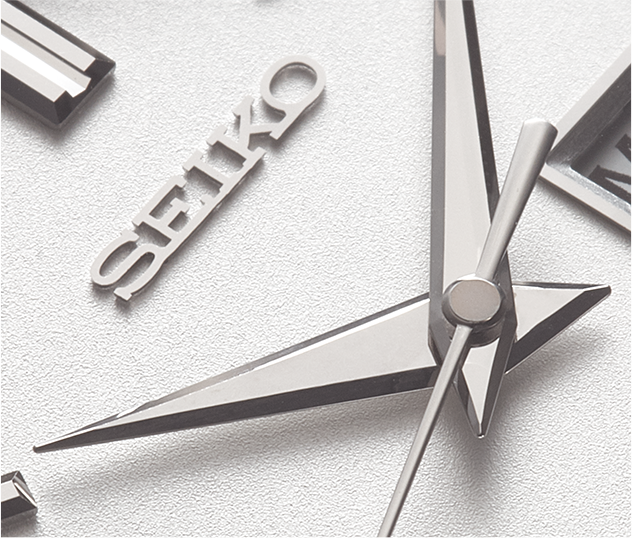
The hour hands were cut at a 30 degree angle and had a highly polished finish, with razor edges. The upper surface of the seconds hand was rounded.
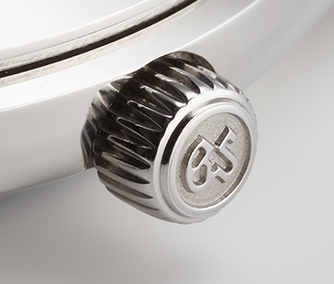
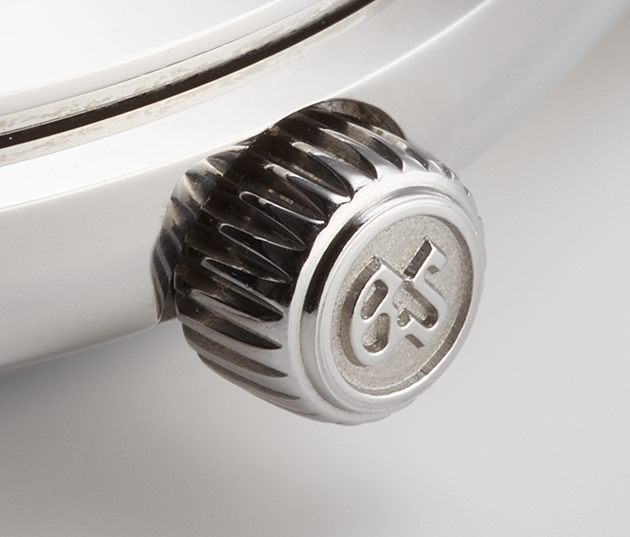
When setting time, it takes just three rotations of the crown to move the minute hand through 360 degrees.
